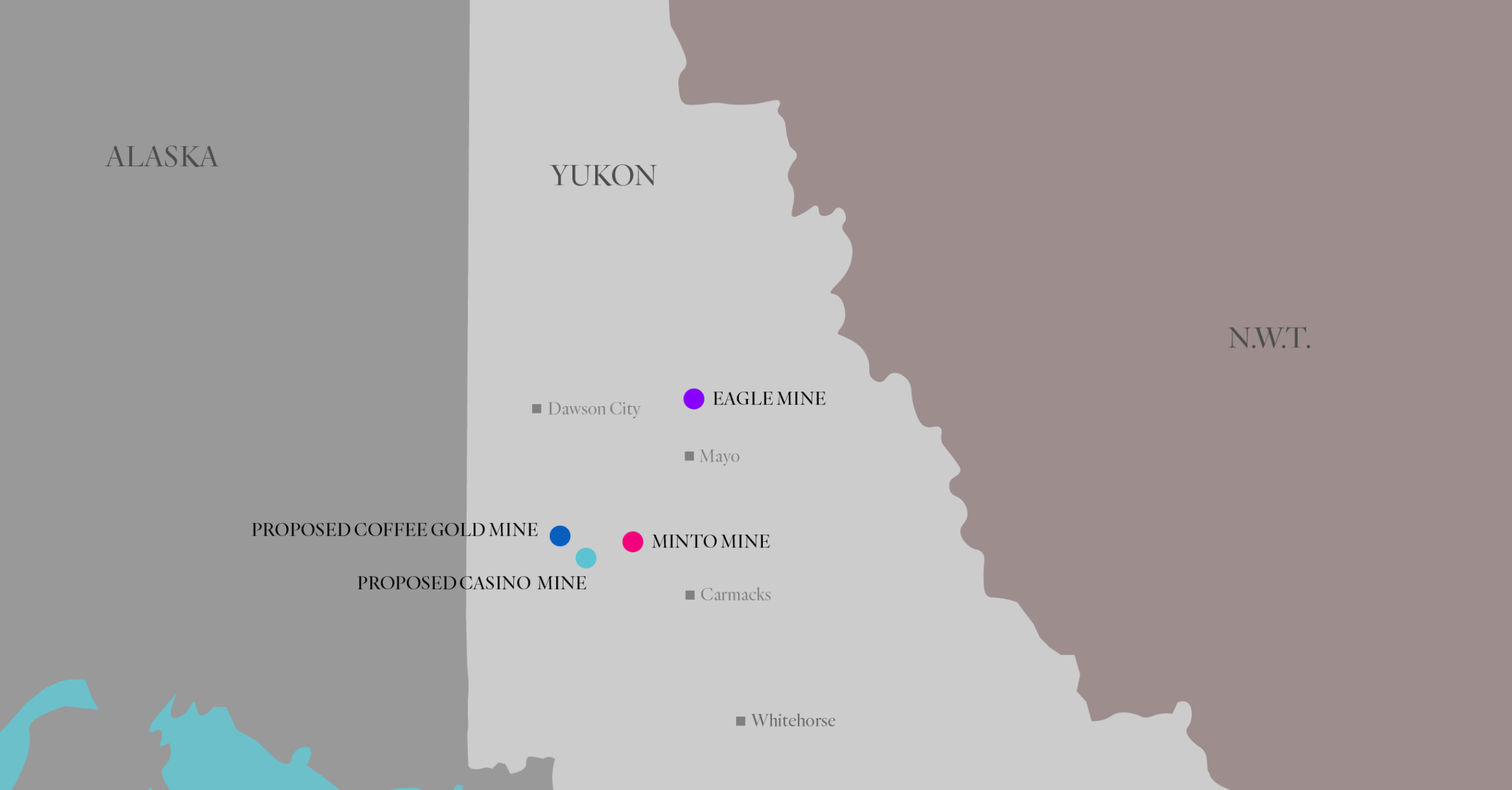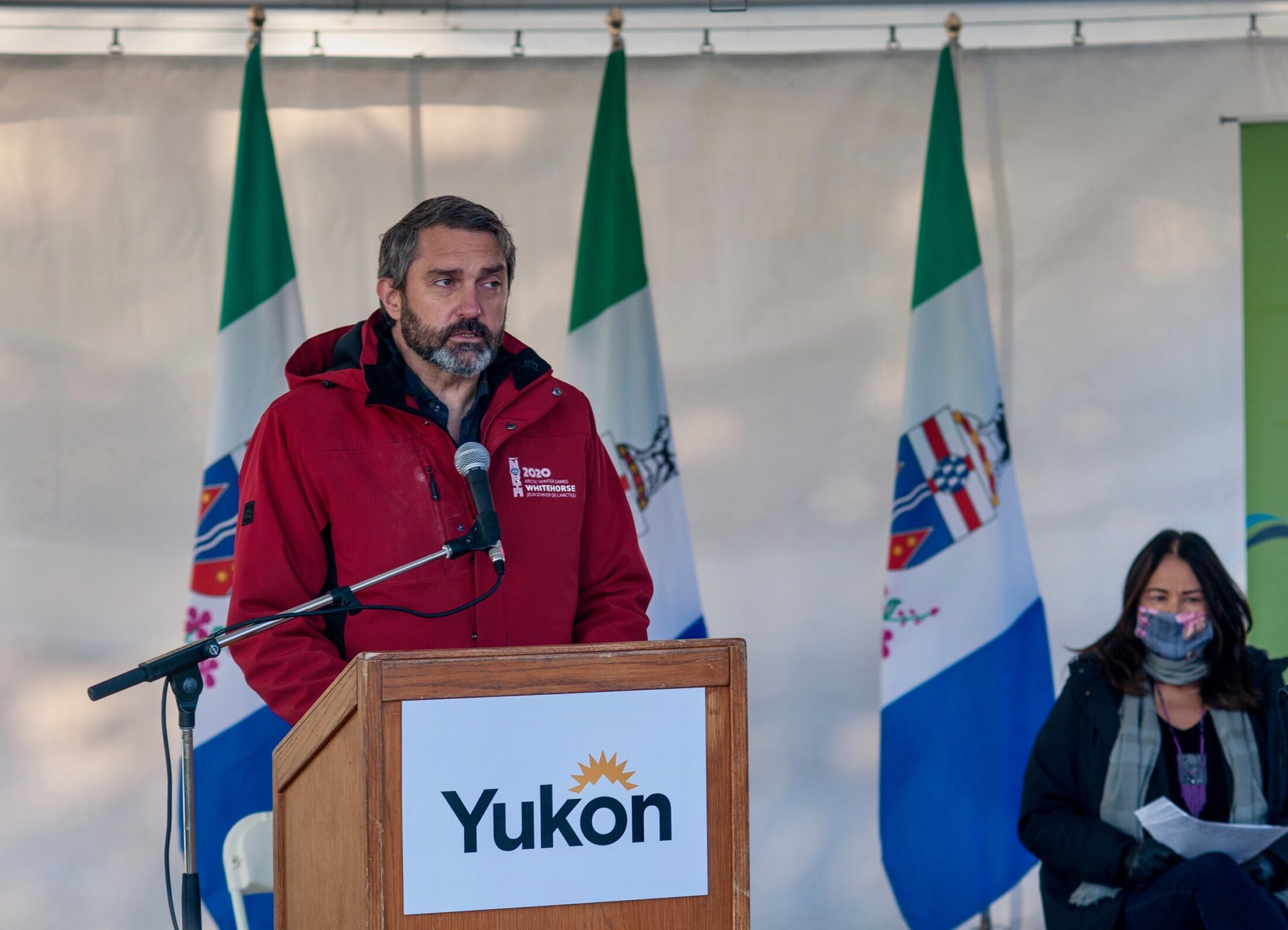
In a Nova Scotia research lab, the last hope for an ancient fish species
Racing against time, dwindling habitat and warming waters, scientists are trying to give this little-known...
The Yukon government’s new climate change strategy does little to address greenhouse gas emissions from the cornerstone of the territory’s economy — mining.
This omission is the “elephant in the room,” according to Lewis Rifkind, mining analyst at the Yukon Conservation Society.
In its climate change strategy, the Yukon government proposes establishing intensity-based targets for mines — targets based upon the amount of emissions generated per unit of production — but not until 2022.
Even if the government does establish intensity-based targets, the approach is flawed, Rifkind said. If a mine increases its production over time, for instance, the company will be allowed to release more emissions so long as the emissions per unit of production don’t increase.
Rifkind would rather see the government implement a cap, which would set a hard limit on the total emissions for the sector.
According to the government, an intensity-based target means emissions reductions apply whether production is high or low — which helps to take into account the boom and bust nature of the industry. It also means that a quiet year in mining doesn’t let other sectors off the hook.
“Establishing a tailored approach for mining emissions eliminates the possibility for a substantial change in mining activity to skew our efforts to reduce emissions from other parts of Yukon’s economy,” the strategy says. “For example, if mining emissions were part of the Yukon-wide greenhouse gas reduction target, a significant decrease in mining activity could help us to reach the 2030 target without needing to make as many improvements to our transportation and heating systems.”
The climate change strategy sets in motion work to reduce greenhouse gas emissions in the territory by 30 per cent from 2010 levels. This includes a goal to bring electricity for on-grid communities up to 97 per cent renewable, from about 90 per cent currently.
But the energy mix looks vastly different when heating and off-grid electricity supplied by diesel is factored in, bringing the renewable contribution down to just under a quarter of all energy generated in the territory.
According to the strategy, only 10 to 15 per cent of the territory’s emissions came from the mining sector between 2009 and 2017, but Rifkind said the government doesn’t appear to have a handle on what could be the sleeping giant of emissions in the future — off-grid mines.
The two operating hard rock mines in Yukon (and a third that’s due to come online by the end of the year), are connected to the main grid, which is primarily powered by hydro electricity. Mines like Victoria Gold’s Eagle Gold mine, near Mayo, are relatively low carbon, Rifkind said, but there are off-grid mines working through the environmental assessment process that are likely to be powered by fossil fuels.

There are two operating mines in Yukon — Minto and Eagle. Coffee Gold and Casino are both under review. Map: Carol Linnitt / The Narwhal
This includes Newmont’s Coffee Gold project, near Dawson City, which could be the largest mine in Yukon’s history by production value. Natural gas and diesel would be used to generate electricity at the mine, according to the company’s project scope document submitted to the Yukon Environmental and Socio-Economic Assessment Board. Roughly 19 million kilowatt hours of energy would be used annually at the mine — enough electricity to power about 1,357 Yukon homes for a year. According to a 2017 Coffee project proposal, the mine is anticipated to produce roughly one million tonnes of carbon dioxide over its 12-year life.
Kudz Ze Kayah is another off-grid project that’s making its way through the assessment board. The company behind it, BMC Minerals, wants to produce about 180,000 tonnes of zinc per year — as well as smaller amounts of copper and lead. According to a 2017 project proposal, the mine is projected to produce roughly 110,000 tonnes of emissions over 10 years.
And the proposed off-grid Casino copper and gold mine, west of Carmacks, was estimated in 2014 to generate more than 13 million tonnes of emissions during its 22-year lifespan.
As soon as there are off-grid mines,“emissions are going to go nuts,” Rifkind said.
The strategy does include a requirement that by 2025, 20 per cent of diesel fuel used in the territory is blended with biodiesel to result in a cleaner burn. It’s baked into methods to reduce emissions from road transportation, but also applies to off-grid mines, said Aletta Leitch, senior project manager of the Yukon government’s climate change secretariat.
According to government calculations, implementing the use of biodiesel on mine sites will reduce emissions by roughly 25,000 tonnes by 2030.
“Basically, the bulk of mining emissions are coming from the use of diesel on site — driving equipment around, heating buildings,” Leitch said.
She added that while placer mines are smaller than hard rock mines, there are many of them in the territory — the Klondike Placer Miners’ Association has a membership of around 200 — that consistently operate every year, meaning their collective emissions can add up to a lot.
While companies provide emissions forecasts during the environmental assessment process, the strategy doesn’t include this information. Instead, it used mining emissions from the past, between 2009 and 2017, when up to three quartz mines were in production any given year.
Asked why mine emissions forecasts aren’t included in the strategy, Todd Powell, director of the mineral resources branch of Energy, Mines and Resources, said emission levels are refined during the environmental assessment process, so they could drastically change over time.
And Leitch said that some mine projects may not even go ahead, so including them in the strategy could be somewhat of a moot point.
“It would be overly simplistic to just assume that every mine going through the regulatory process is going to operate, and how long it’s going to operate for and it’s emissions are going to be exactly that level,” she said.
The government does plan to use mine emissions forecasts, just not yet. Starting in 2022, quartz mines will be required to provide their projected greenhouse gas emissions and report actual emissions every year through the licensing process, the strategy says.
“We need to be considering what projects might go online and not only what their emissions might be but what their production level might be,” she said. “All of that work just takes time to make sure we do it properly.”
Setting up intensity-based targets for mine emissions is deferred to 2022 so government officials can further deliberate with industry players and the federal government, according to Yukon Premier Sandy Silver.
“We admit that we’re not there yet,” Silver said during the unveiling of the climate strategy on Sept. 14. “We have to work with the federal government to figure out the technicalities of what it means for Yukon’s intensity-based targets, but this approach helps us to monitor and to reduce on a long-term basis without companies being able to skew their responsibilities, as well.”

Yukon Premier Sandy Silver speaks at the unveiling of Yukon’s climate change strategy on Sept. 14. Photo: Julien Gignac / The Narwhal
The federal government’s emissions pricing system for industry, which is also based on intensity-based targets, charges companies that go over emissions limits. The excess emissions charge was set at $20 per tonne in 2019, increasing by $10 per tonne each year until it reaches $50 in 2022. Yukon’s system needs to dovetail with Ottawa’s, the strategy says, which will require additional co-ordination with the federal government.
Ranj Pillai, Yukon’s minister of Energy, Mines and Resources, acknowledged that the mining sector is the outlier in the territory’s climate strategy, but said it wasn’t worth delaying the release of the rest of their plan.
He said a careful balance needs to be struck in tackling mine emissions, adding that’s why more time is warranted.
“When you think about Yukon, to deconstruct mining from our economy or to change it dramatically is not easy work,” Pillai said “We have to disrupt it in a way that we can still maintain the industry.”
Get the inside scoop on The Narwhal’s environment and climate reporting by signing up for our free newsletter. On March 17, federal Conservative Leader Pierre Poilievre...
Continue reading
Racing against time, dwindling habitat and warming waters, scientists are trying to give this little-known...

From investigative reporting to stunning photography, we’ve been recognized with four 2024 CAJ Awards nods...

The Narwhal is expanding its reach on video platforms like YouTube and TikTok. First up?...
